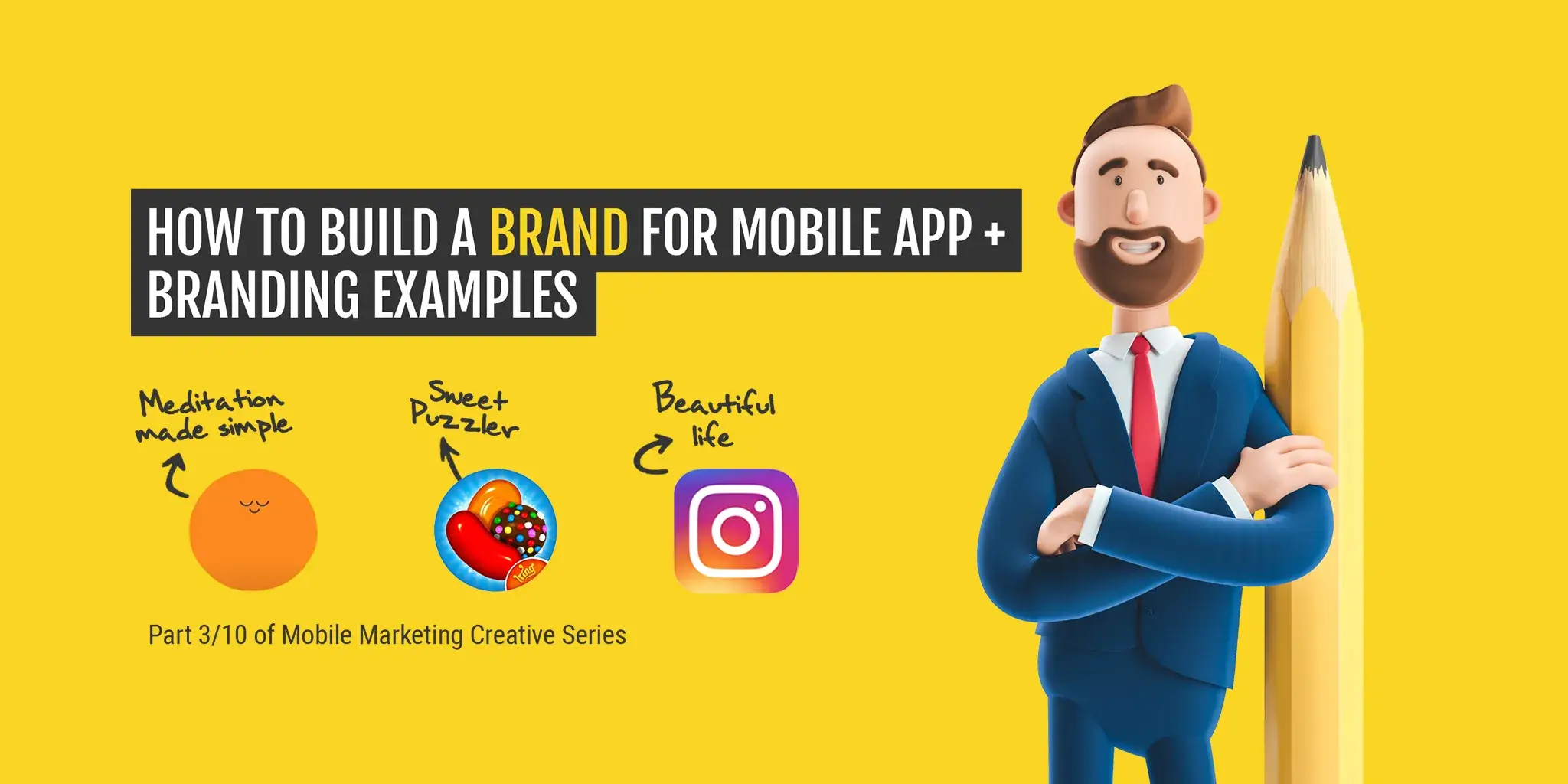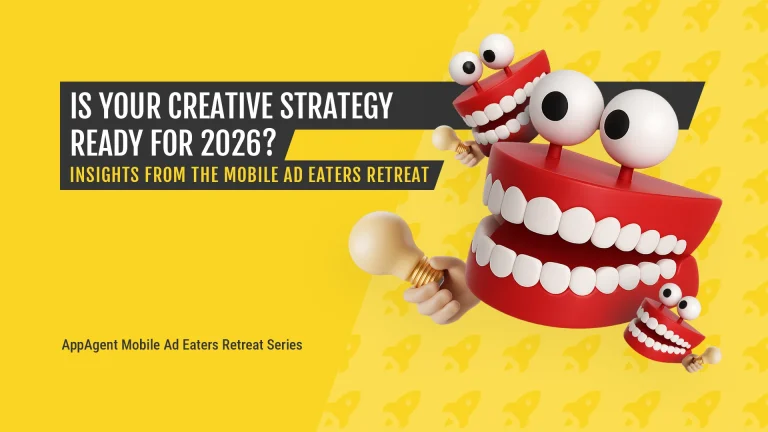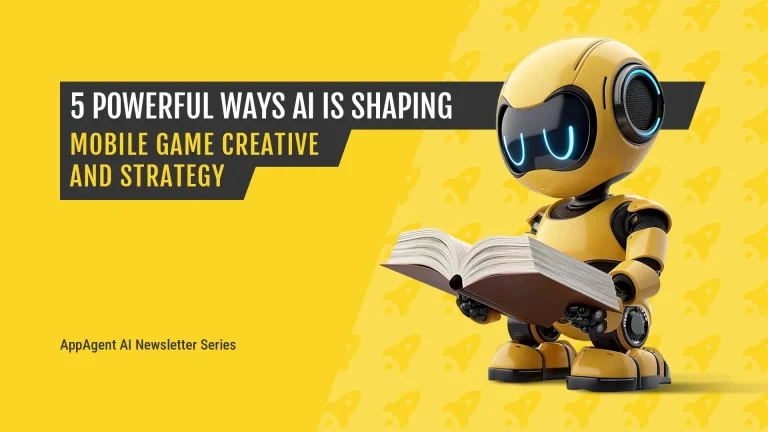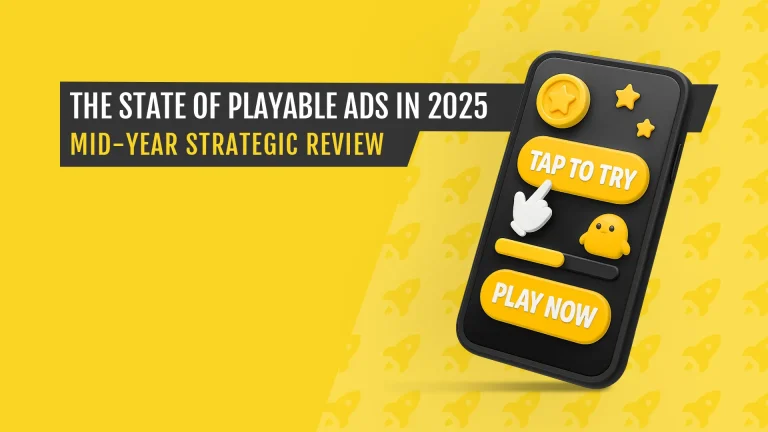Welcome to the third part of our Mobile Marketing Creatives Series where we’ll show you some tips & examples of Mobile App or Game Branding. In a series of ten episodes, we aim to provide insight and inspiration on creating thumb-stopping visuals to promote your app.

Download the Mobile Ad Creatives eBook today to read the other nine parts of this series. The comprehensive guide includes ten core topics condensed into a practical blueprint with examples from AppAgent’s Creative Team.
In this article, you will learn:
- The true significance of a brand in the realm of mobile and why it holds importance.
- How to establish the brand identity for your mobile app or game effectively.
- Practical examples and insights on incorporating your brand into your communication strategy.
The Importance of Mobile App Branding
In June 2020, there were 4.37 million apps in the Apple App Store, with thousands more added every day. A brand serves as a lighthouse in the myriad of choices, making it easier for users to navigate through the thousands of options. Mobile app branding promises that the product will deliver what’s expected–functionally and performance, privacy and security.


We can classify well-known mobile apps as brands. Sometimes they are built organically, but in most cases, those apps are engineered by founders, product managers, or marketers to become established as the number one choice in people’s minds.
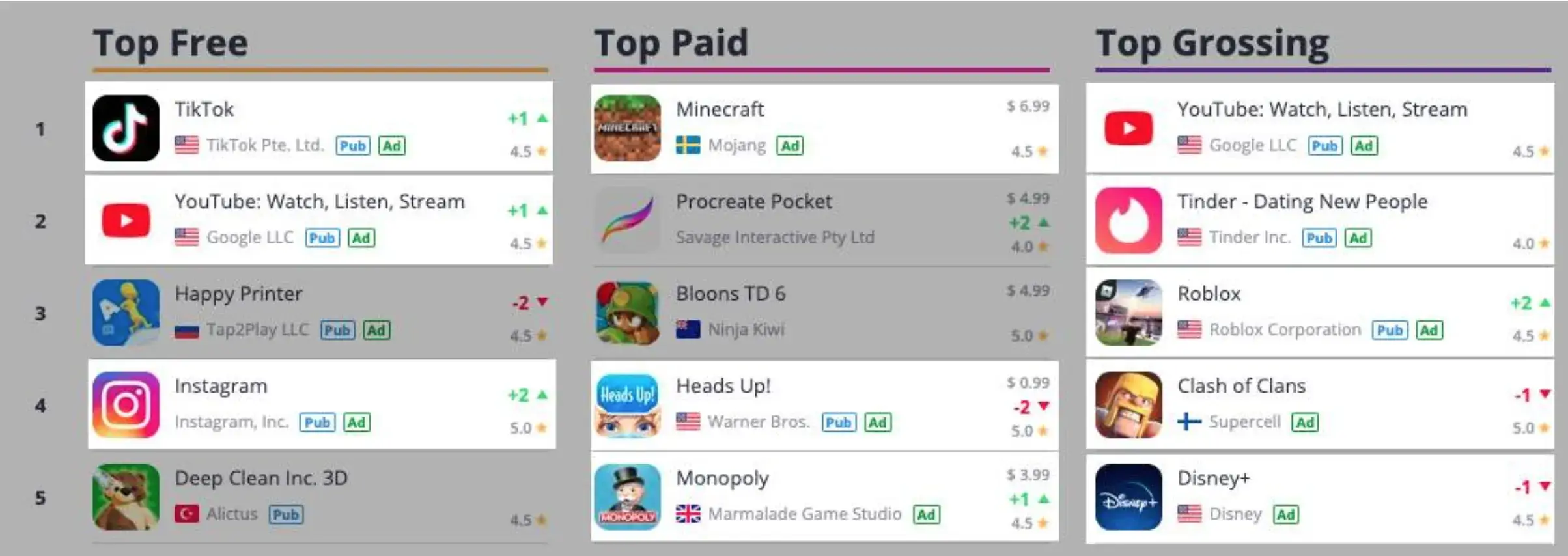
For publishers, the brand plays a crucial role in boosting all marketing efforts and expanding the reach of mobile apps or games.
Gessica Bicego, Senior Director of Growth at Blinkist, shared her insights during a Clubhouse discussion on brand vs. performance:
“Around two years ago, we at Blinkist recognized the limitations of relying solely on performance marketing. Regrettably, we started building the brand a bit late, which led to reaching a plateau before we could have expanded further. Since then, we’ve been prioritizing brand building on par with other direct-response activities.”
What is Mobile App Branding?
What defines a great mobile brand, and how does it impact customer behavior?
Imagine you’re seeking a way to alleviate the stress from working at home with your kids. You decide to explore a companion app, so you search for “stress relief” in the App Store.
Calm appears at the top of the search results and looks appealing, but the colors don’t quite resonate with you. TeasEar in the second spot doesn’t ring a bell. However, in the third position, you find Headspace!
You recognize those adorable illustrations, and the promise of “meditation made simple” seems perfect for a beginner like you. The fact that they’ve partnered with Netflix adds to the app’s credibility, right?
So, you confidently hit the download button.

This classic user journey is the outcome of a decade’s worth of effort. Over the past 10 years, Headspace has remained steadfast in its mission to make meditation easy and welcoming for beginners.
This is evident in their straightforward messaging, distinctive and user-friendly visual design, and strategic collaborations with other brands like Netflix, which enhance the overall perception of their brand image.
Is Building a Mobile Brand Necessary?
We can all name memorable mobile brands like YouTube, Angry Birds, and Headspace. But achieving such a prominent position for your own brand and knowing where to begin might seem challenging.
So, how do you get there, and where should you start?
During a recent webinar discussing ASO trends in 2021, our panelists were confronted with the reality that not every company has the financial resources to create a brand on the scale of Angry Birds.
Sylvain Gauchet, Growth Manager at Babbel and author of Growth Gems, made an insightful point in his response:
“Even if you don’t invest into brand awareness campaigns, you are building a brand anyway.”
The manner in which you design the product, its store page, and your advertisements shape your brand. Additionally, direct communication through social media plays a significant role in establishing a distinct visual and written identity. Your media budget simply enhances these brand-building efforts.
Claire Rozain, User Acquisition Manager at Gameloft, shared her observation:
“A strong brand boosts recognition and, by extension, reduces your CPI. An excellent example of this is a TV campaign that helps lower your CPI.”
Understanding your mobile app brand identity and direction is crucial to your app’s success.
How to Design Your Own Mobile Brand
There are three layers to mobile app branding:
1. Core: Unique selling proposition (USP), key messages, tone of voice and brand language.
2. Story: Brand story and key characters such as founders, ambassadors or heroes.
3. Activities: Awareness-building activity via YouTube series, merchandising, sponsorships, etc.
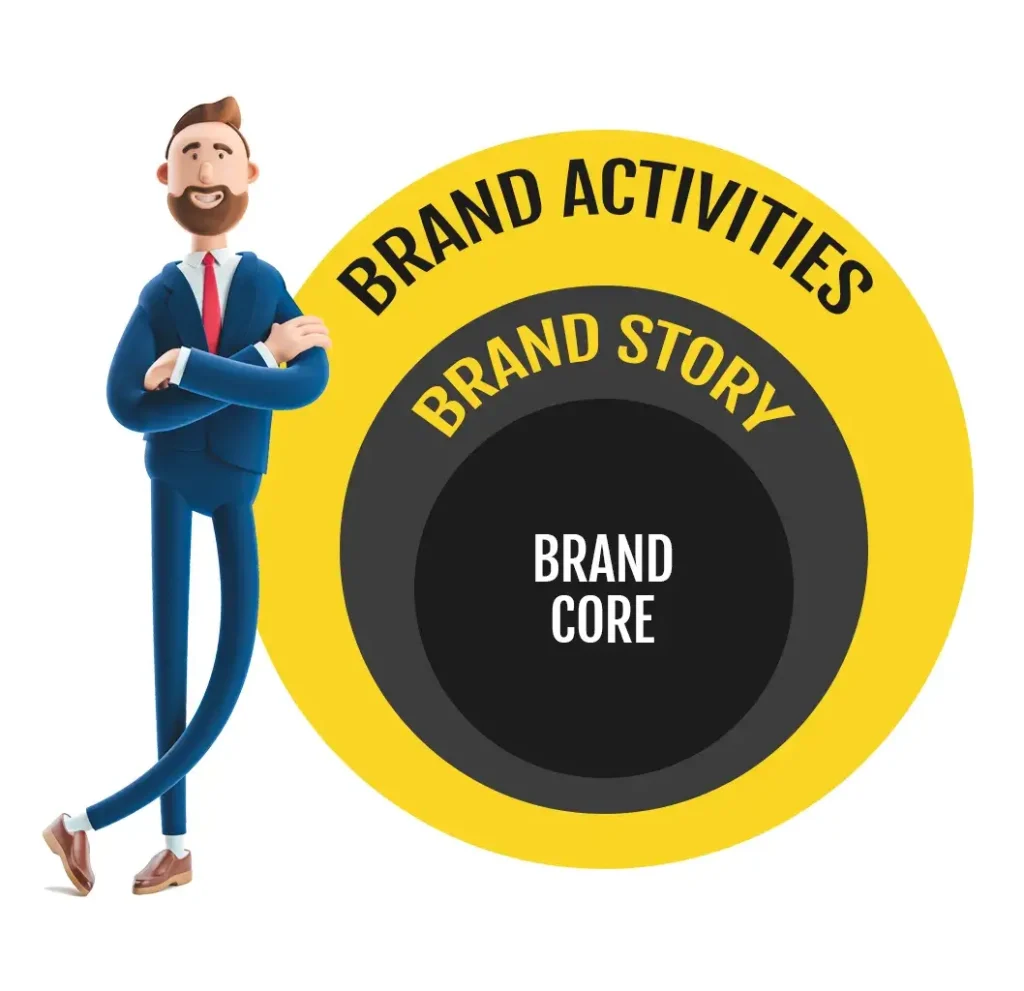
1. Brand Core
For a business to achieve success, it’s essential to have clarity on three critical aspects for each branch:
- The purpose of your business.
- Identifying your target audience.
- Determining how you want to be perceived in the market.
At AppAgent, we have developed a Minimum Viable Brand framework to assist our clients in defining these core components of their brand.
Through interactive workshops, we collaborate to discover answers to these fundamental questions and gather visual references, which aid our design team in creating a cohesive visual identity.
Some of the questions we explore include:
- How does your app address an existing problem?
- In which areas of your business do you excel, outperforming competitors by a significant margin?
- Who is your current user, and who do you envision as the ideal paying customer?
- What motivates customers to choose your product or service?
- What tone of voice best represents your brand: formal or friendly, deep or humorous, high-tech or traditional…?
Here’s an example of how we defined the tone of voice for a mobile app:
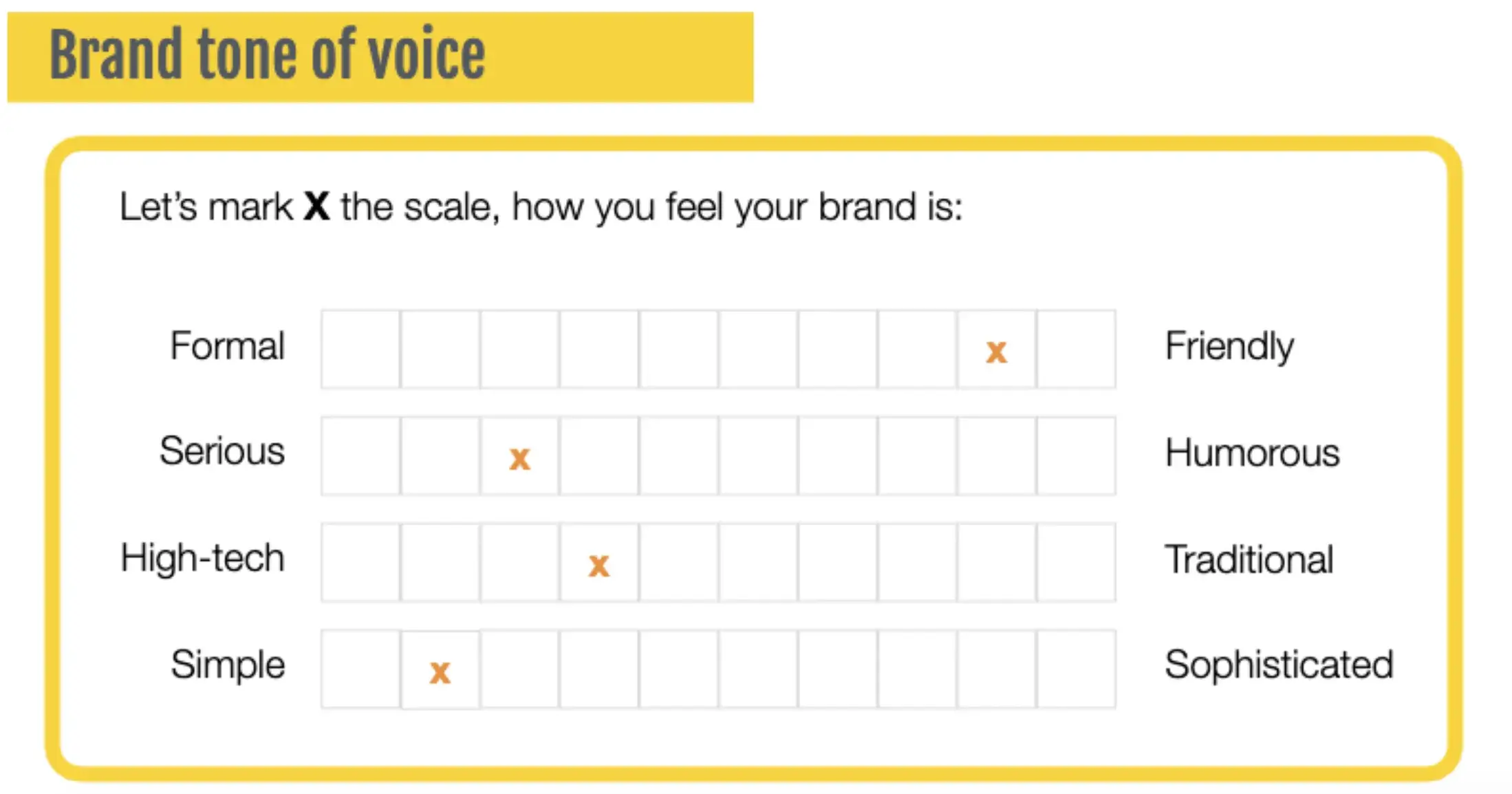
For visual guidance, a mood board helps the design team to take a clear direction.
To illustrate this, here’s an example we developed for a rapidly growing social media app called Clapper:
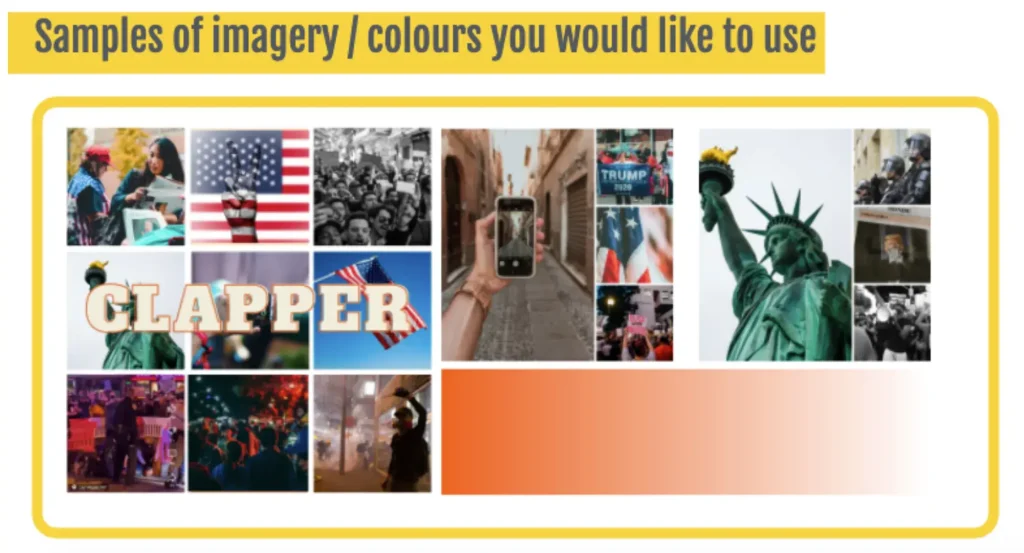
The answers to these questions, along with visual references, are synthesized to create your unique selling proposition, key messages, language style, and critical visual identity.
The purpose of the MVB framework isn’t to create an extensive 1000-page brand bible for every possible scenario. Instead, it provides a practical and relatively simple set of foundational building blocks that are easily comprehensible for copywriters, art directors, and marketers.
Naturally, your needs will change and become more sophisticated over time, so you’ll eventually need to add greater detail or meat to the bones.
2. BRAND STORY
Once you establish the core of your mobile brand and your business starts to grow, you may naturally consider enhancing the appeal of your brand image.
Most successful mobile app brands are built around a story that contains a more profound purpose that explains why the business exists. Such stories often have strong emotions and inspire others to action. (You can learn more about this in Simon Sinek’s influential book Start with Why.)
It’s easier to illustrate this using some examples. The brand story could revolve around the founder (i.e. Daniel Ek and the Spotify revolution in music distribution), the product’s origin (i.e. Kevin Systom’s a-ha moment on vacation in France that lead to Instagram), historical moments (i.e. Angry Birds as the studio’s 52nd produced game), or key characters (i.e. Barbarian for Clash of Clans or Kayla Itsines in Sweat).
When working for Finimize, a London-based fin-tech app that provides financial news in context to Gen-Z, AppAgent’s creative team used the founder’s story as the basis for the branding strategy. Using a familiar TikTok style, the film tracked the evolution of the brand. It used jargon-free language and a voiceover recorded by the founder, interspersed with humorous clips to lighten the tone.
You can view the video here:
3. BRAND ACTIVITIES
Brand activities encompass targeted marketing efforts aimed at building awareness. It is at this stage, the final layer of mobile app branding, where budget allocation begins to play a significant role.
Here are two extreme examples to illustrate the point: building your brand can be achieved through relatively inexpensive community events, as Finimize has done, or through costly feature films like Angry Birds.
Smaller businesses should focus on cost-effective tactics to develop their brands, such as blogging, YouTube videos, and live streaming. On the other hand, larger enterprises with more substantial budgets can take bolder actions, such as investing in TV ads (like Clash of Clans during the Super Bowl) or organizing large tournaments (like Clash Royale League World Finals).
We suggest beginning with easy-to-measure activities that are conveniently accessible with just one tap. Chasing an exploited addressable market or having access to big budgets could encourage you to take more risks and invest in mass-market channels with little control.
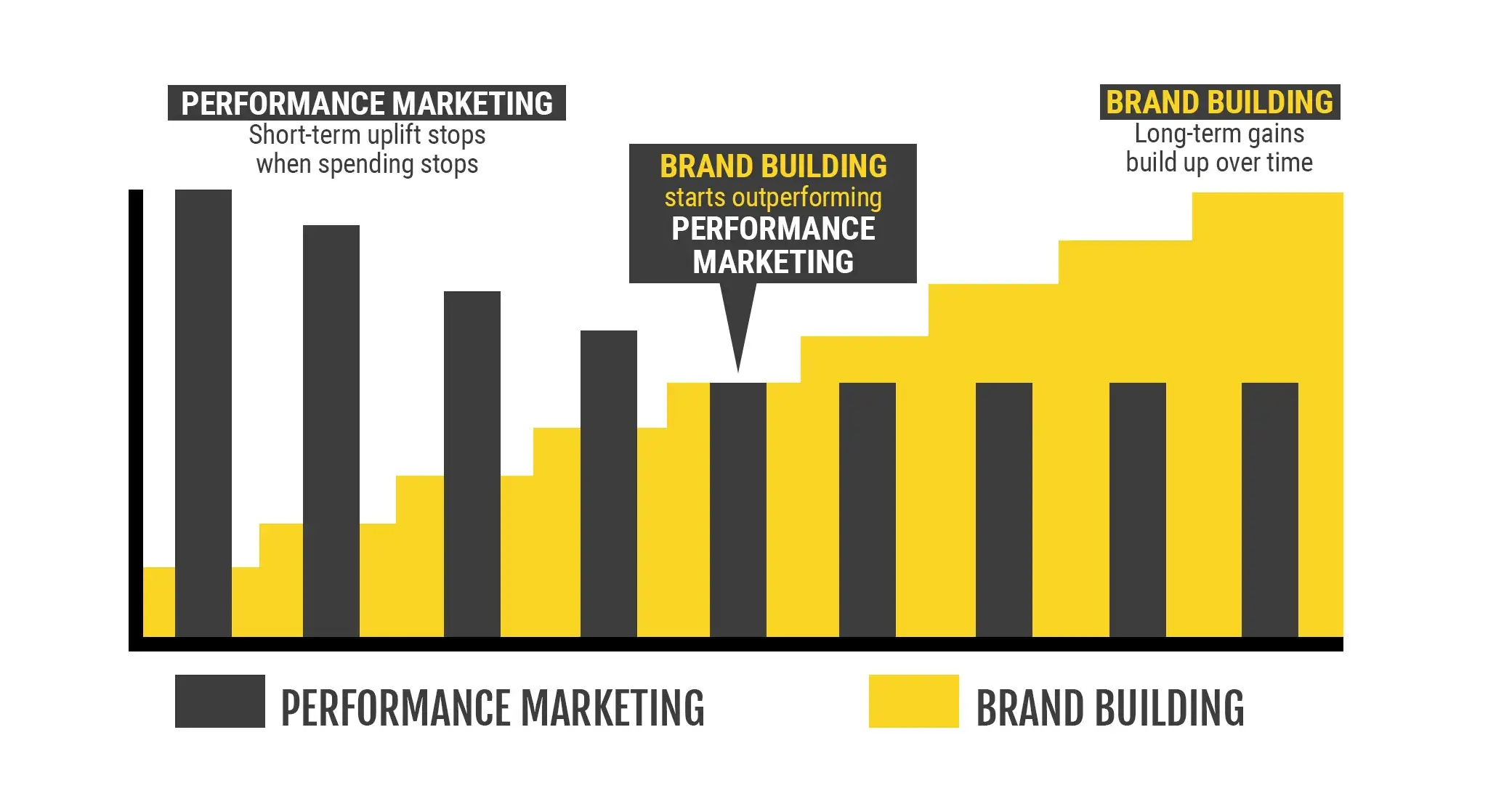
10 Examples of Successful Mobile App Branding
Here are ten examples that demonstrate excellent approaches to mobile app branding. These examples don’t just include strong visual brand identity; they all have precise positioning, consistent communication, and utilize emotions to establish a deeper connection with users.
EXAMPLES OF NON-GAMING MOBILE BRANDS
- Duolingo: app store, mobile ads, Instagram
- Sweat: app store, mobile ads, Instagram
- Fabulous: app store, mobile ads, Instagram
- Elevate: app store, mobile ads, Instagram
- PicsArt: app store, mobile ads, Instagram
EXAMPLES OF GAMING MOBILE BRANDS
- Best Fiends: app store, mobile ads, Instagram, Youtube
- RAID: Shadow Legends: app store, mobile ads, Instagram, Youtube
- Candy Crush series: app store, mobile ads, Instagram, Youtube
- Clash Royale: app store, mobile ads, Instagram, Youtube
- Gear.Club: app store, Instagram, Youtube
Final Thoughts
Externally, the importance of mobile app branding has grown considerably. With the industry maturing and app stores becoming more crowded, having a recognizable brand is now more crucial than ever.
Internally, creating a solid brand foundation that’s codified into a document will help align your team when creating all communications materials and visuals. This can save considerable time and reduce back-and-forth discussions among team members, especially as the organization expands.
Begin by defining the core elements of your brand, and then proceed to create a deeper story that communicates its purpose effectively. Focus on brand campaigns after mastering performance channels, but before reaching a point of limited growth.
Think of your brand as a set of communication rules, but also allow room for experimentation, trying different forms, and discovering the most effective styles and executions for user conversion. Avoid making your brand guidelines overly restrictive, as they could hinder the performance of your marketing activities.
Building a powerful brand takes time and requires consistency. With new trends and new communication platforms such as TikTok gaining popularity, your style may need to be adjusted, but it must remain faithful to the principal values over decades
Mobile Ad Creatives eBook
How to Design Ads and App Store Creatives
A comprehensive guide to designing thumb-stopping visuals that will grow your user base and revenue.
How do you build a Mobile Branding Strategy?
Begin by defining the brand essentials and later develop a deeper story that expresses its purpose. Invest into mobile app branding campaigns only once you master performance channels. Think of your brand as a set of communication rules.
There are three layers to mobile app branding:
- Brand core: Unique selling proposition (USP), key messages, tone of voice and brand language.
- Brand story: Brand story and key characters such as founders, ambassadors or heroes.
- Brand activities: Awareness building activity through YouTube series, merchandising, sponsorships, etc.
